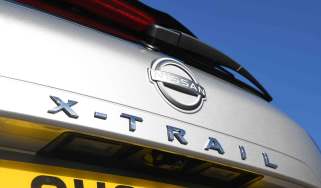BMW 2 Series 2017 facelift review
The popular BMW 2 Series has been facelifted for 2017. We drive it in 220d form to see what's changed

Minor improvements to the BMW 2 Series range bolster what was already one of our favourite small coupes. It’s great to drive, relatively practical, and in 220d form, offers a compelling blend of performance and low running costs. The rear-driven model is more fun, however, and a fair bit cheaper as well – so unless you desperately need the security of all-wheel drive that would be our choice.
In and amongst the general industry headache of October’s new car registration figures was an interesting stat for BMW; the brand sold more 4 Series than 3 Series models for the first time in its history. It appears their sleeker styling has driven buyers into two and four-door coupes, instead of traditional saloons, hatchbacks and estates.
It’s handy, then, that we’re testing BMW’s updated 2 Series in coupe form for the first time. Over 180,000 have been sold since the model was launched in 2014, and its appeal hasn’t dwindled yet. Nevertheless, the coupe gains some subtle styling revisions for 2017, including new front and rear LED light designs, beefier air intakes and a slightly altered kidney grille. Some new colours and alloy wheel designs also feature, but it remains a quietly smart-looking coupe – especially with the extra visual trinkets of our M Sport test car.
Used - available now

2020 BMW
2 Series
44,610 milesManualDiesel2.0L
Cash £12,315
2020 BMW
2 Series
96,270 milesAutomaticDiesel2.0L
Cash £10,295
2017 BMW
2 Series
36,010 milesManualDiesel2.0L
Cash £11,995
2026 BMW
2 Series
22,492 milesAutomaticPetrol2.0L
Cash £26,673• BMW 2 Series Convertible facelift review
The changes inside are a bit more noteworthy. The 2 Series benefits from BMW’s latest tile-based touchscreen infotainment software, with new connected services, extra voice control functions and a touchpad on the rotary iDrive dial to allow easy destination entry. It remains one of the most intuitive systems of its type to use, fitting in with the driver-focused mantra of the car’s cabin design. Elsewhere, some black gloss plastic inserts on the dash and instruments helps lift the ambience and retain the quality feel necessary for a coupe at this price.
There are no mechanical changes to the 2 Series in this round of updates, but we’d argue it never really needed any. With fewer rivals than ever, it continues to be the best small four-seat coupe to drive, with balanced and entertaining handling courtesy of the rear-wheel drive layout and BMW’s celebrated chassis tuning.
The steering responds predictably to your movements, and body control is excellent. Standard-fit run-flat tyres don’t do the ride any favours, but the optional adaptive dampers fitted to our test car smooth out the worst lumps and bumps. There’s no shortage of grip with the xDrive all-wheel drive system fitted, although it’s only available with the slick eight-speed automatic gearbox.
But the 2 Series remains a solid all-rounder. The 220d variant fits can cruise quietly when required, and while it can’t rival the M240i for outright thrills, it offers strong enough performance to entertain. It combines that with decent refinement and low running costs – the latter not a trait of the range-topping petrol model.
There’s a couple of things to consider before plumping for this 2 Series, however. The first is whether you really need the expensive xDrive system – as along with the auto gearbox it adds a sizeable £3,000 to the 220d’s list price.
The second is whether you’ll miss the practicality of the 1 Series hatch, which is available with a similar range of engines. Small adults can just about sit comfortably in the back of the 2 Series, but it’s not what you’d call roomy. Still, the 390-litre boot is a useful size for a car of this type.








